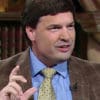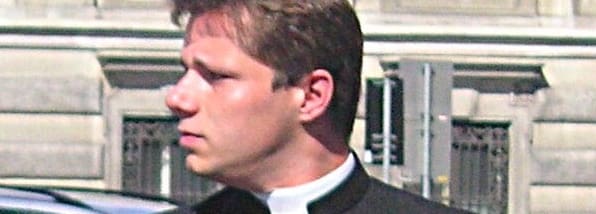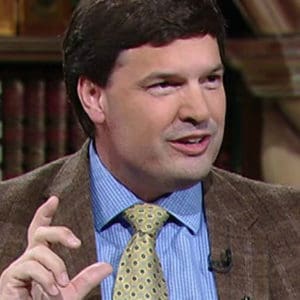The Mystery of the Priesthood
Because I work at a seminary, I have gotten to know quite a few priests over the years. Many of them have become good friends. Some have left the ministry for one reason or another. All of them have grappled with the meaning of their unique vocation.
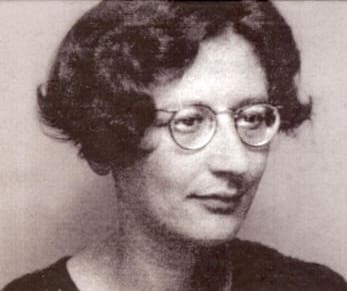 Simone Weil explained that we do not know anything without suffering. Suffering is the price of true knowledge. I think this is true to the extent that one suffers in love, for love. Good priests understand this. They have come to realize who they are because they have discovered the secret of giving themselves away. But what they have discovered is true for all of us. We only truly discover who we really are by giving the gift of ourselves in love. Giving the gift of self – this involves suffering – because one cannot love another except at one’s own expense. Because the priest must live out this gift of self in a very public way — the priest is a great sign, a witness, for the rest of us about what our humanity is all about. He reveals this to us through a suffering love for Christ, for the Church and for those entrusted to his care.
Simone Weil explained that we do not know anything without suffering. Suffering is the price of true knowledge. I think this is true to the extent that one suffers in love, for love. Good priests understand this. They have come to realize who they are because they have discovered the secret of giving themselves away. But what they have discovered is true for all of us. We only truly discover who we really are by giving the gift of ourselves in love. Giving the gift of self – this involves suffering – because one cannot love another except at one’s own expense. Because the priest must live out this gift of self in a very public way — the priest is a great sign, a witness, for the rest of us about what our humanity is all about. He reveals this to us through a suffering love for Christ, for the Church and for those entrusted to his care.
There is another important thing about priests who are willing to suffer this kind of knowledge – they are always men of great prayer. By this, I do not mean that they are always great contemplatives – at least in the popular sense. Some of the priests I know complain that their prayer seems shallow. But whether one feels one’s prayer is deep or shallow is not important. What is important is that one is faithful to the gift of prayer entrusted to him. When we are faithful to the gift of prayer – even if it seems shallow — it makes our prayer great. That is, in part, why I can say that these are men of great prayer. Their life of prayer is an expression of a constant mature love, a humble cry of the heart. Sometimes this may be joyful and consoling. Often, it is dry and offered in the midst of the severest struggles. It is like a lamp of hope – and what such priests very seldom realize is that this small still light not only helps them find their own way – but for some of the rest of us, that humble light is just what we need to go on.
A lamp in the darkness. It was a great privilege to go on pilgrimage to the Grande Chartreuese 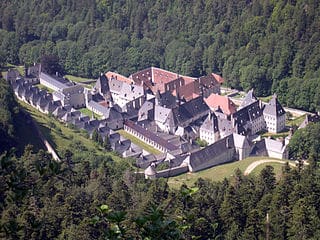 and pray with them. In the main chapel at midnight I sat in darkness, shivering in the cold, covered with a blanket. It was pitch black — except for the far wall of the sanctuary. There a vigil candle flickered – The only source of light in the silent darkness. Then, out of this silent darkness, a voice called out and a whole choir of monks, there hidden in the dark, broke out. They chanted psalm after psalm, in the silent darkness, by heart, with nothing but that candle lit to give light (expect for an occasional flash of an electric lamp when a younger monk needed to see the text).
and pray with them. In the main chapel at midnight I sat in darkness, shivering in the cold, covered with a blanket. It was pitch black — except for the far wall of the sanctuary. There a vigil candle flickered – The only source of light in the silent darkness. Then, out of this silent darkness, a voice called out and a whole choir of monks, there hidden in the dark, broke out. They chanted psalm after psalm, in the silent darkness, by heart, with nothing but that candle lit to give light (expect for an occasional flash of an electric lamp when a younger monk needed to see the text).
It struck me that that lamp in the darkness is not only a sign of Christ’s presence but a symbol of the prayer of the Church — the prayer taken up by priests and the prayer to which we are all invited. It is a prayer of vigilant love, waiting on the Lord in hope. The silent cold darkness was a symbol of this world where God seems so absent at times – but that He has never abandoned. Only by suffering the cold and the darkness with vigilant love would one ever come to know how the Lord is present in such a place. But for those who are willing, like the priests I know, such prayer warms the heart. It is a true encounter with Christ which teaches us to love like him – to suffer in love, to give ourselves in love, to become our true self.
Art photography: Simone Weil (1909—1943) – a French philosopher, Christian mystic and political activist of Jewish origin, 17 November 2013, unknown photographer, PD-US, copyright expired; Monastery of the Grande Chartreuse, in Saint-Pierre-de-Chartreuse (Isère, Rhône-Alpes, France), 24 July 2006, own work, Floriel, CC, GNU; both Wikimedia Commons. [Feature image mirror detail of Clerical Clothing, KF, 11 September 2005, PD-Worldwide, Wikimedia Commons.]
Editor’s Note: For more of Anthony’s insights on prayer, don’t miss his new book, Hidden Mountain Secret Garden, an experience like no other. Anthony has an unusually profound understanding of mystical theology and lives a life of deep prayer. Among his many accomplishments and responsibilities, Dr. Lilles now teaches theology for the Avila Institute.


